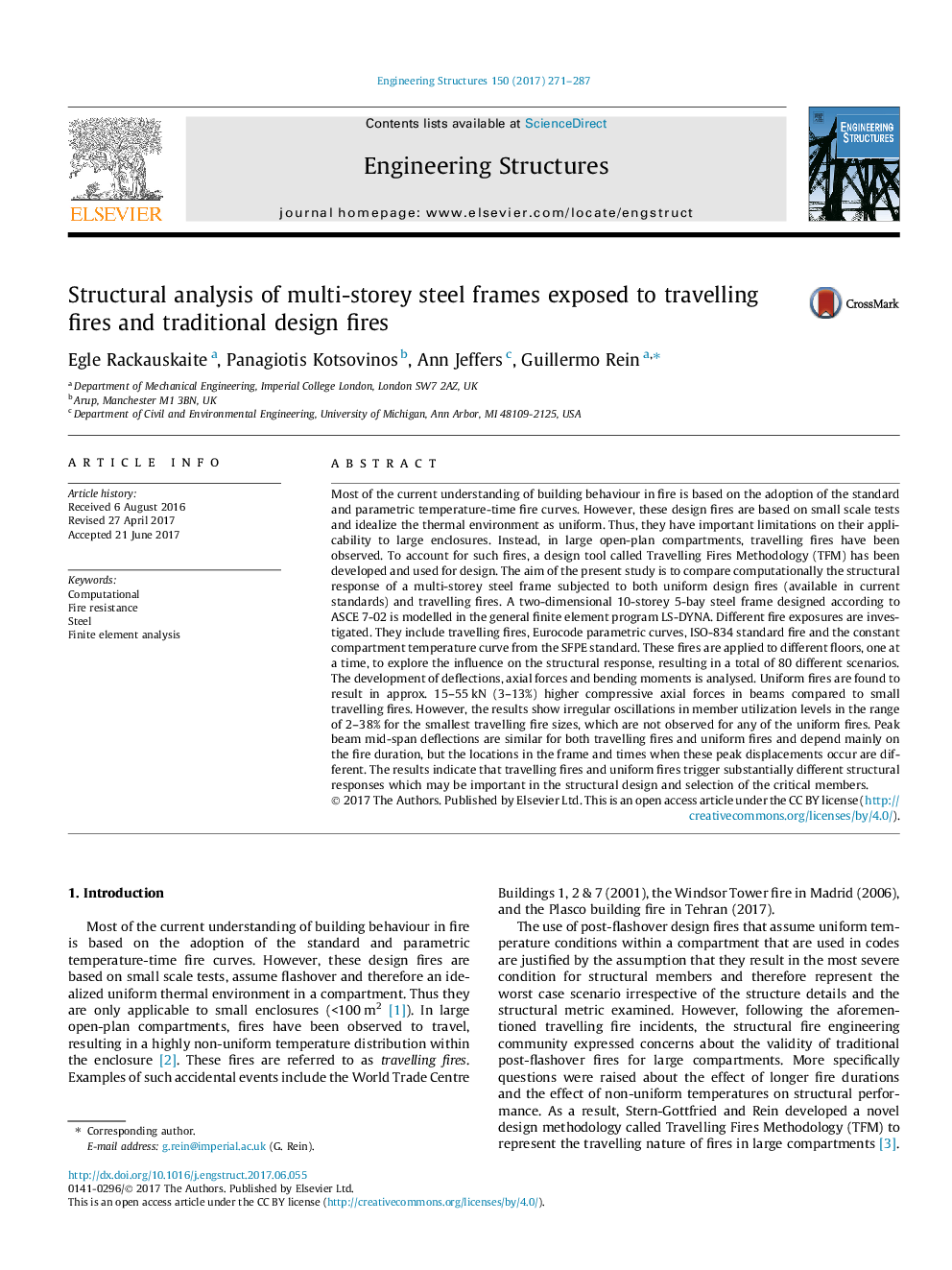| کد مقاله | کد نشریه | سال انتشار | مقاله انگلیسی | نسخه تمام متن |
|---|---|---|---|---|
| 4919833 | 1429077 | 2017 | 17 صفحه PDF | دانلود رایگان |
عنوان انگلیسی مقاله ISI
Structural analysis of multi-storey steel frames exposed to travelling fires and traditional design fires
ترجمه فارسی عنوان
تجزیه و تحلیل ساختار فریم های چند طبقه ای فولاد در معرض آتش سوزی های مسافرتی و آتش سوزی های طراحی سنتی
دانلود مقاله + سفارش ترجمه
دانلود مقاله ISI انگلیسی
رایگان برای ایرانیان
کلمات کلیدی
محاسباتی، مقاوم در برابر آتش، فولاد، تجزیه و تحلیل عنصر محدود،
موضوعات مرتبط
مهندسی و علوم پایه
علوم زمین و سیارات
مهندسی ژئوتکنیک و زمین شناسی مهندسی
چکیده انگلیسی
Most of the current understanding of building behaviour in fire is based on the adoption of the standard and parametric temperature-time fire curves. However, these design fires are based on small scale tests and idealize the thermal environment as uniform. Thus, they have important limitations on their applicability to large enclosures. Instead, in large open-plan compartments, travelling fires have been observed. To account for such fires, a design tool called Travelling Fires Methodology (TFM) has been developed and used for design. The aim of the present study is to compare computationally the structural response of a multi-storey steel frame subjected to both uniform design fires (available in current standards) and travelling fires. A two-dimensional 10-storey 5-bay steel frame designed according to ASCE 7-02 is modelled in the general finite element program LS-DYNA. Different fire exposures are investigated. They include travelling fires, Eurocode parametric curves, ISO-834 standard fire and the constant compartment temperature curve from the SFPE standard. These fires are applied to different floors, one at a time, to explore the influence on the structural response, resulting in a total of 80 different scenarios. The development of deflections, axial forces and bending moments is analysed. Uniform fires are found to result in approx. 15-55Â kN (3-13%) higher compressive axial forces in beams compared to small travelling fires. However, the results show irregular oscillations in member utilization levels in the range of 2-38% for the smallest travelling fire sizes, which are not observed for any of the uniform fires. Peak beam mid-span deflections are similar for both travelling fires and uniform fires and depend mainly on the fire duration, but the locations in the frame and times when these peak displacements occur are different. The results indicate that travelling fires and uniform fires trigger substantially different structural responses which may be important in the structural design and selection of the critical members.
ناشر
Database: Elsevier - ScienceDirect (ساینس دایرکت)
Journal: Engineering Structures - Volume 150, 1 November 2017, Pages 271-287
Journal: Engineering Structures - Volume 150, 1 November 2017, Pages 271-287
نویسندگان
Egle Rackauskaite, Panagiotis Kotsovinos, Ann Jeffers, Guillermo Rein,
